Boost and position lock products
This guide helps build a foundational understanding of creating a simple ranking rule for keyword searches by boosting, position locking or burying a product.
💡Prerequisite knowledge
Product Grid Editor Overview: This guide provides a functional overview of the Product Grid Editor. You'll be using the Product Grid Editor to create ranking rules.
Guide scope
This guide includes:
- Process of creating simple ranking rules using Boost to Top and Bury to Bottom ranking operations.
- A very brief introduction to slot-based ranking tools like Lock Position # and Lock in Place. For a detailed walkthrough of these, refer to Slot Based Merchandising after reading this guide.
This guide doesn't include:
-
Blocklist ranking rules.
For a detailed discussion, refer to Blocking products from search results.
Why boost or position lock a product?
Bloomreach algorithmically ranks products in search and category results set for offering the most personalized customer experience and maximizing your revenue per customer.
However, you also get the option of curating a customized product grid for specific purposes like running campaigns for promoting a new product or brand.
You can customize your product grid by using the following operations:
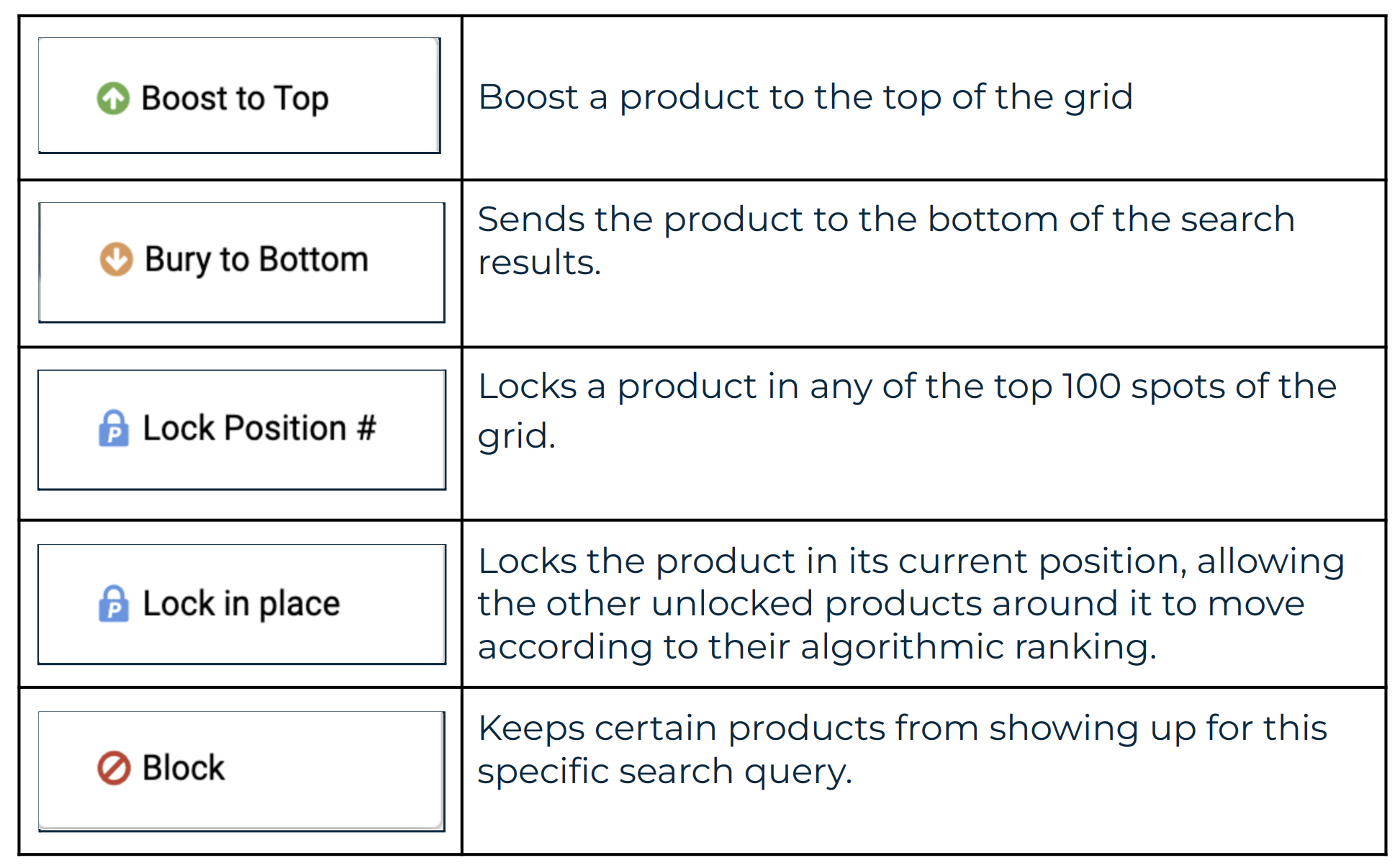
Create a ranking rule using Visual Editor
1) Login to Bloomreach Dashboard
Use https://tools.bloomreach.com/ to login.
For EMEA customers, use: https://tools.bloomreach.co.uk
2) Open the Ranking rules page
-
For Search ranking rule, go to Merchandising → Site search → Ranking rules.
For Category ranking rule, go to Merchandising → Categories → Ranking rules. -
Click + New ranking rule to open the Product Grid Ranking Editor.
3) Enter search term(s) in the Search Terms field to trigger the rule
The terms that you enter in the Search Term field are the terms that your customers use to search for products. This field accepts a search term or phrase after hitting Enter/Return. Press the Enter or Return key to start the search. These queries become the name of your rule when you save it.

Notes
- We don't support Ranking operations (Boost/Bury/Product Slots) for the "*" query (which refers to all the products in the feed/catalog), or on product IDs containing "*".
- We don’t support merchandising rules for queries that include the character ":" (colon).
Assigning rules to more than one search term or category page
While you can enter just one term like "pillows", you can also use different terms to assign these rules to more than one search term or category page. Make sure you hit Enter/Return after entering each search term so that it turns into a bubble, such as "pillow" or "red pillow" in the screenshot above. You can then click on these bubbles to view the product results for each of the different queries.
Note: During this tutorial, you can experiment with different queries. As long as you don't enable the rule at the end, your experiments won't affect your customers' experiences on your site. If you enable the rule and then discover problems, it's easy to disable the rule and either fix it or delete it and create a new one.
4) Browse products to boost, bury, or lock
Locate the products in the Visual Editor. Then, click the “+” symbol and select one of these operations:
- Boost to Top if you’d like to move the product to the top of search results.
- Bury to Bottom if you’d like to move the product to the last position in search results.
- Lock Position # if you’d like to lock the product at a specific position in the result set.
- Lock in Place if you’d like to lock the product at its present position.
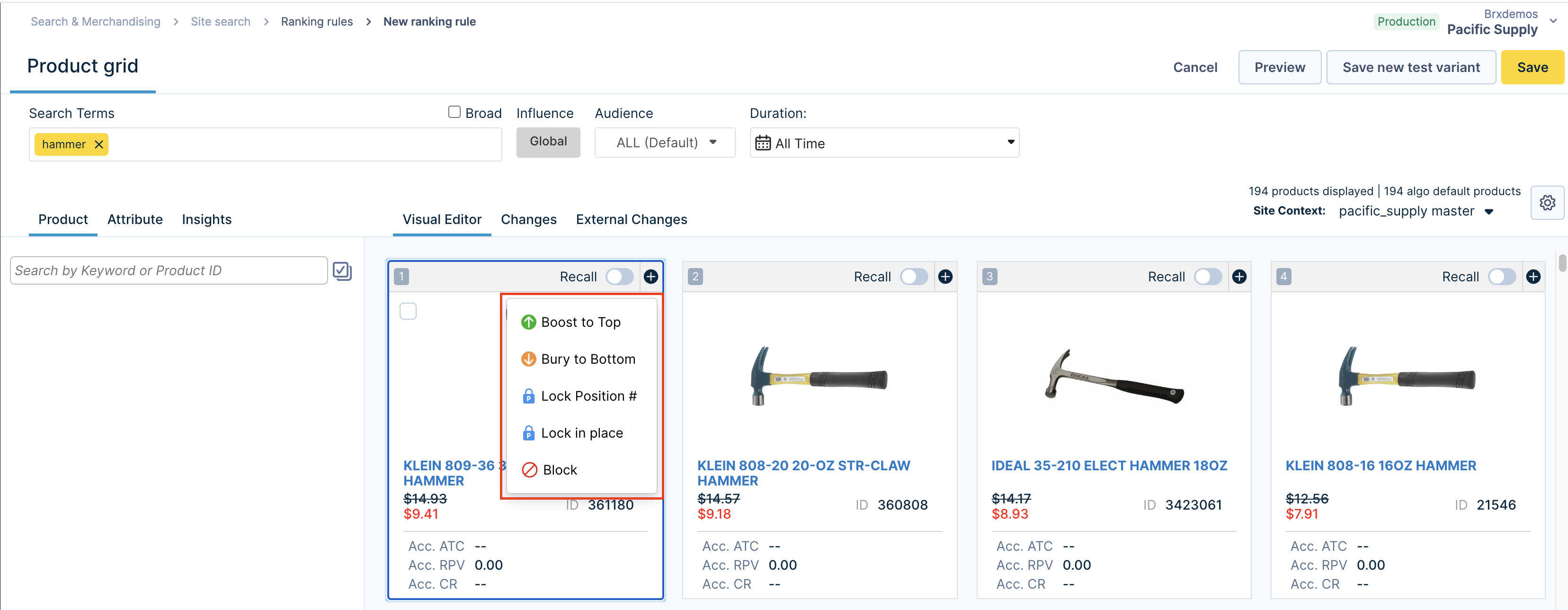
Click the “+” symbol to view and select the desired merchandising operation.
Note: The Recall toggle at the top of the product card represents the Add to Recall operation. Enabling this toggle will add the product to the recall of related queries.
5) Set time period for ranking rule in Duration field
The default duration of the rule is set to All Time. All Time implies that the rule has no specific end date. To modify this, click the dropdown box to see a list of default duration options and choose one that suits your needs. You can also select a Custom Range of your choice.
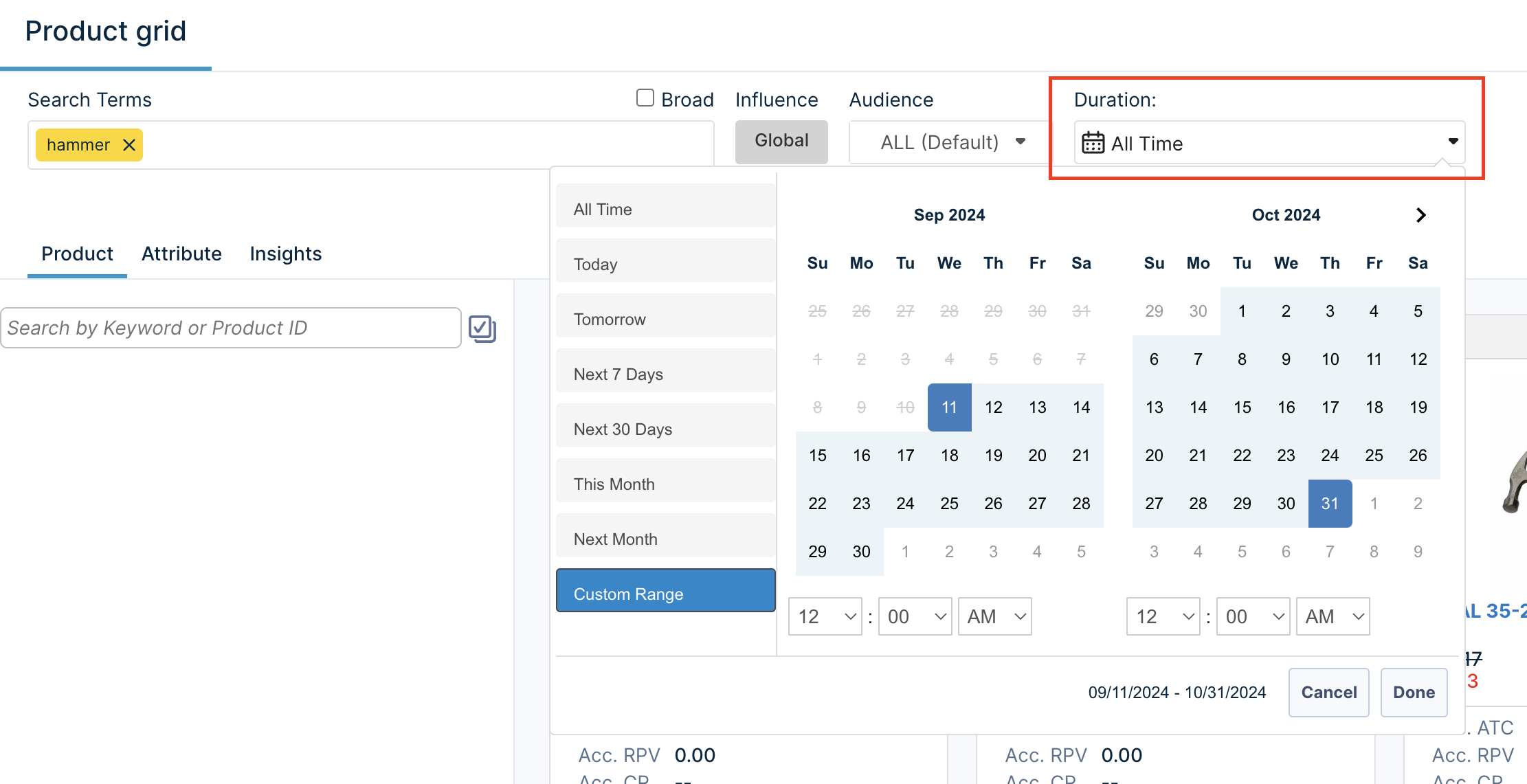
The default duration of the rule is set to All Time. You can also select a Custom Range of your choice.
6)Select audience group from Audience dropdown
The default audience group for every ranking rule is set to ALL, which targets all site visitors. If you want to target a specific set of visitors for your ranking rules, you can create custom audience groups and select the desired audience group for each ranking rule. Refer to this guide to learn more about creating targeted experiences for different audience groups.
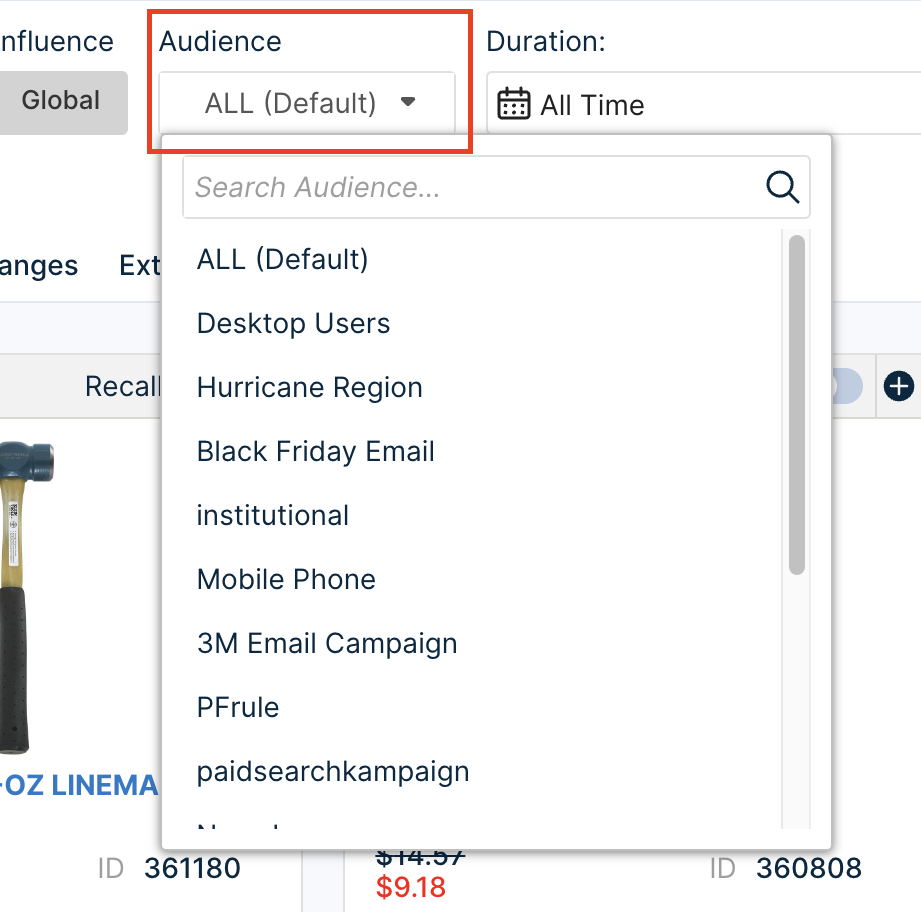
7) Save the rule
Click the Save button. Once you do, your rule is saved, and the dashboard returns it to the Search Ranking Rules page. The name of your rule is the same as the list of keywords that you configured in the Search Terms field to trigger the rule.
To enable/disable a rule, toggle the Enable slider from Off to On and vice versa. Your rule may take up to 30 minutes to reflect in the API.

Example
Veronica is a merchandiser for a site that sells home goods.
She knows that the margin is high on a specific yellow pillow, but it is not showing up in an optimal spot in search results.
She decides to boost that specific product in searches for pillows and a few other terms.
Veronica plans her new ranking rule
Veronica determines that she needs to create a ranking rule to boost a specific yellow pillow for specific keyword searches.
She makes a list of the keywords that she wants to trigger the rule:
-
pillows
-
yellow pillow
-
blue pillow
-
throw pillow
Then, she checks for conflicting rules. There are no pre-existing ranking rules for these keywords, so she proceeds further.
Veronica navigates to the Product Grid Ranking Editor and enters her search terms.
Veronica enters the desired keywords in the Search Terms field and Bloomreach displays a list of products that match her search. She boosts the product yellow pillow for these keyword searches. She also boosts other high-margin pillows for these keyword searches.
She checks the green upward arrow symbol on the boosted products to make sure she didn’t bury any product. Then, she sets the duration of her ranking rule to the next 30 days for the rule and saves it.
Add products to algorithm recalled product set using Product search panel
The Product Search field(left-side panel) allows you to find the products that you want to add to the default result set for a query. The steps to add a desired product to the search results are as follows:
1. Search products using the Product search field
To search for a product, you can enter a keyword, a category ID, or a product ID in the Product Search field (highlighted in the screenshot below).
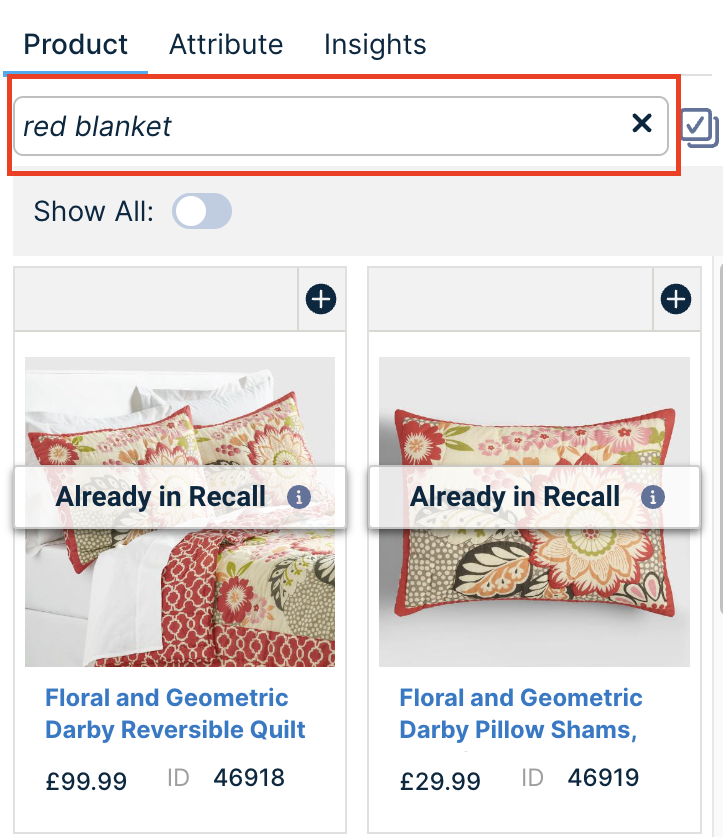
Here are the syntax rules for entering these values:
- To enter multiple keywords, use comma-separated values with spaces.
- To search by product ID, enter product_id:#pid, where #pid is the specific ID number for the product. For example, product_id:123
Press the Enter or Return key to start the search.
Product search using Category ID or multiple Product IDs
You can also search for products using Category ID. To search by Category ID, enter category_id:#catid, where #catid is the specific ID number for the category. For example, category_id:123
You can search for multiple items using a list of multiple product IDs. This enables you to apply bulk operations to multiple products at once.
2. Move the product to the algorithm-based recall set
After finding the desired product, you must move it to the algorithm-ranked search results. To move the product to the recall set, you have these options:
- Using drag and drop: Click the product that you want to add, then drag it from the Product Search field (left panel) to the Visual Editor (right panel). It will place the product in a slot and lock it in that destination position. This is the Product Slot feature.
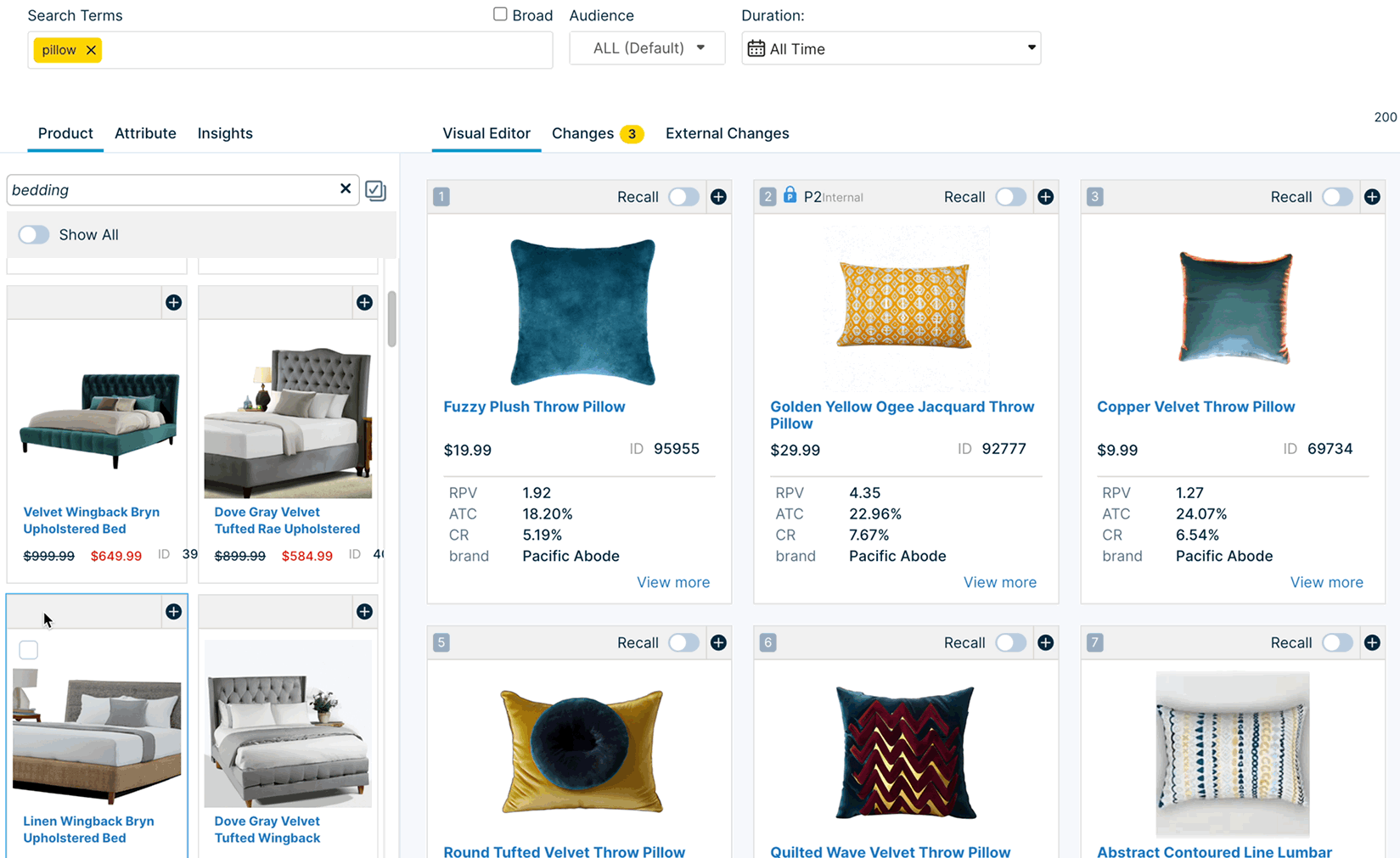
- Using
+icon dropdown: The+dropdown at the top of the product card shows a list of ranking operations. To add a product to the recall and boost it, click on the+icon from the product card in the left panel and selectBoost to Top. The operation selection can vary as per your use case.
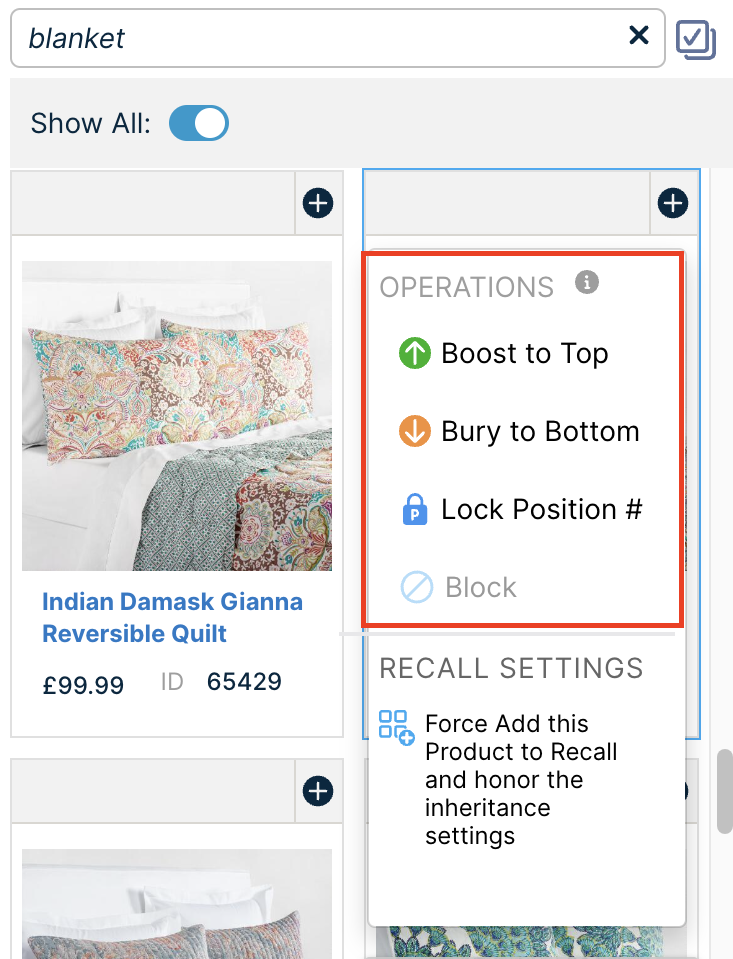
- Using
Add to recalloperation: If you don’t wish to boost/bury or lock the product at any position, you can simply add it to the product result set using Add to Recall operation. Click on the+icon from the product card in the left panel and selectRecall Settings.
Note: When you add products from the Left side panel to the Visual Editor using Add to Recall, the placement of the product is algorithm-driven. For further information on Add to Recall, you may refer to this guide.
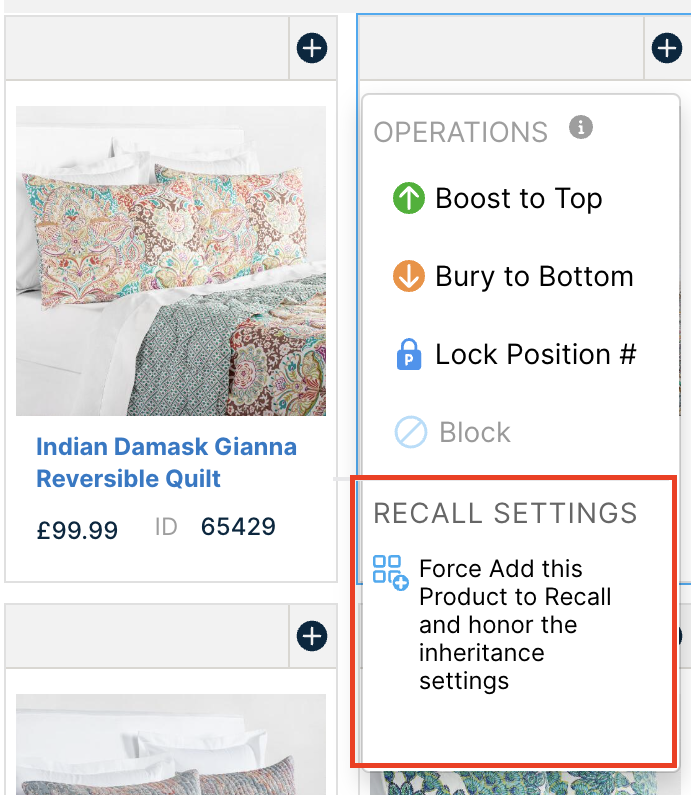
Once you've added the desired products to the default recall set, you can proceed with the steps described above to create a ranking rule.
Good to know
1. Commas and spaces
Separate individual keywords with both a comma and a space. The following list of keywords is in the correct format: red, strappy, heel, sandals
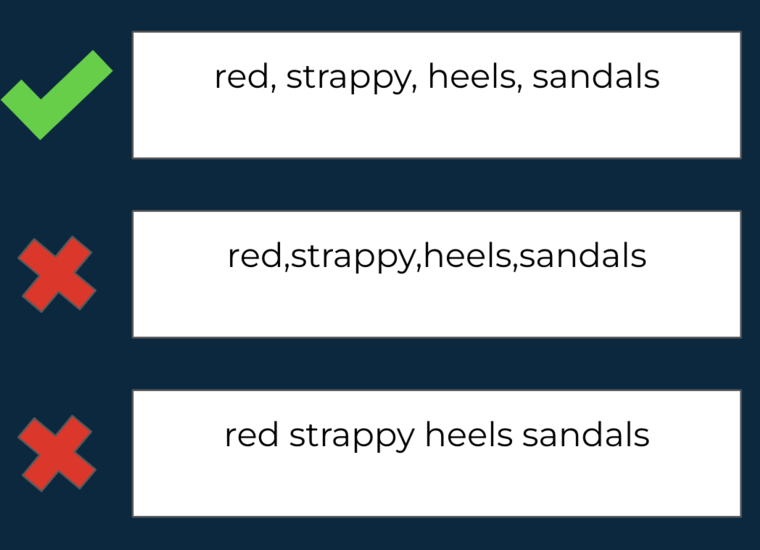
2. Product ranking when you boost or lock more than one product
You can boost, bury, or lock multiple products. When you boost or bury more than one product, the algorithm will rank these products automatically. Suppose you apply the “Boost to Top” operation to 3 products. Since all 3 products can’t be placed in the first position, the algorithm ranks them and puts them in the top three available spots.
For product "Boost to Top" and "Bury to Bottom", the order is dynamic and the visual editor may not reflect the API output. The Preview function will show the exact API output.
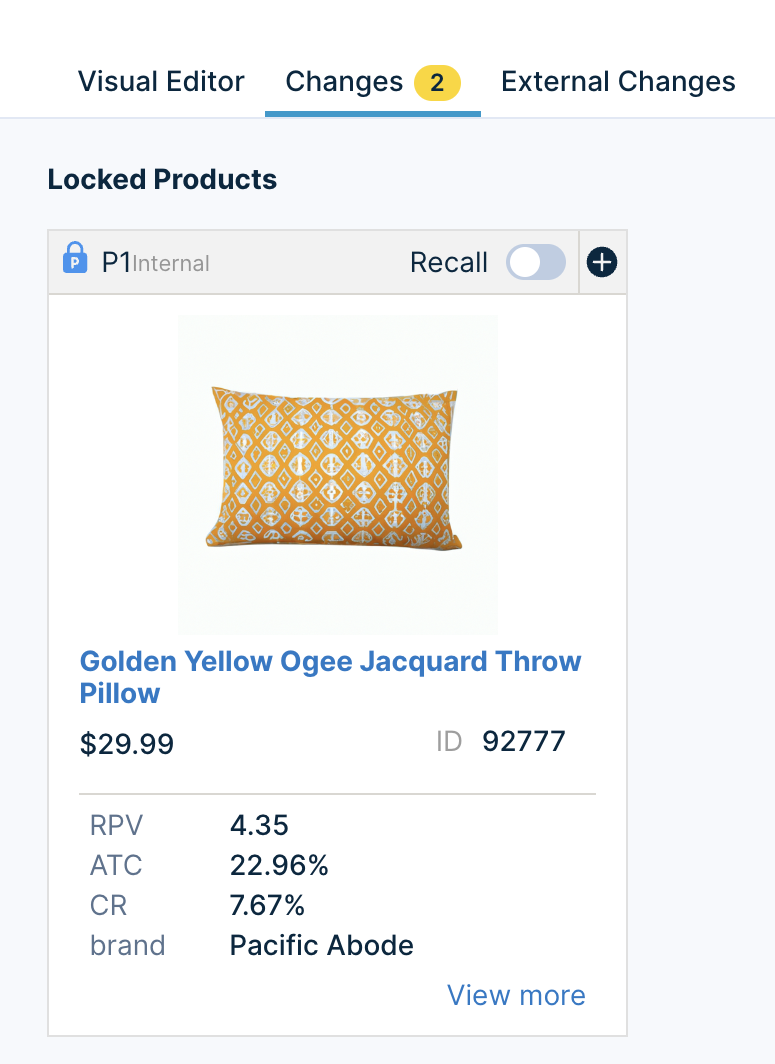
If you are boosting/burying multiple products, you can see the changes under the Changes tab.
3. Ranking products that are already ranked by another rule
If you try to create a rule that affects a product that's already being ranked by another rule, then the product’s panel will be marked as “External” in the top right corner. This indicates that the product’s ranking is being influenced by an external ranking rule. The product panel will also show if the product is being boosted, buried, or slotted by another rule.
4. Plan before you start creating the ranking rule
Before you create a ranking rule, gather all the information for the task and decide how you want the rule to work. It's recommended to plan the ranking rule by :
4.1 Deciding the scope of what you want the rule to modify
The rule can affect the following:
- Ranking results for a keyword search
- Ranking results for a category listing request
- Boosted items
- Buried items
4.2 Assembling a list of keywords/category pages that you want to trigger your rule for boosting or burying a product
- If you want the rule to be triggered by users' keyword searches, create a list of the keywords that you want to trigger the rule.
- If you want the query to take effect for a Bloomreach-powered category page, make a list of the category IDs that you want the rule to modify.
4.3 Checking for conflicts within the Bloomreach Dashboard
If you have multiple rules for the same search term, there is a possibility that your rules might conflict. You may have a product buried in one rule and boosted in another. For example, Lucia already has a rule that buries this Round Wall Shelf for the search query “home decor”.
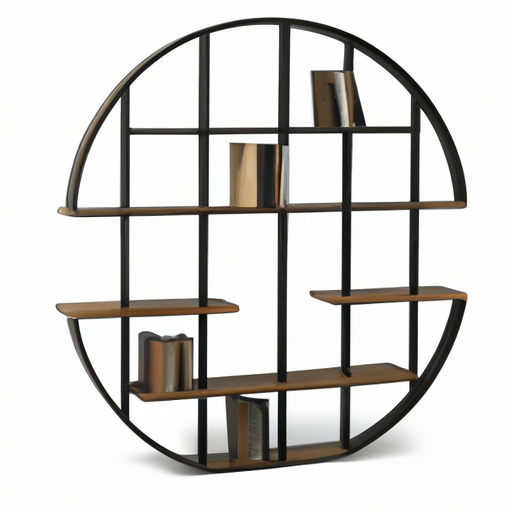
She wants to create a new ranking rule that boosts this Round Wall Shelf and 3 other products.
There's a conflict between her new rule and her existing rule for the search term “home decor”.
Bloomreach automatically resolves this conflict by using an order of precedence, where bury takes priority over boost. This means that the rule that buries the product will win.
As per the example above, Bloomreach Search buries the Round Wall Shelf. Please note that this is specifically for this product only. Conflict resolution is evaluated based on product.
Lucia needs to plan and decide if she wants to bury or boost this Round Wall Shelf. If she wants to boost this product, then she must remove it from her previous bury rule.
She can find the buried product in the Visual Editor, the Left-side product search panel, or under the Changes tab. To remove the product from the bury rule, she clicks the “Un-bury” option under the “ + “ dropdown.
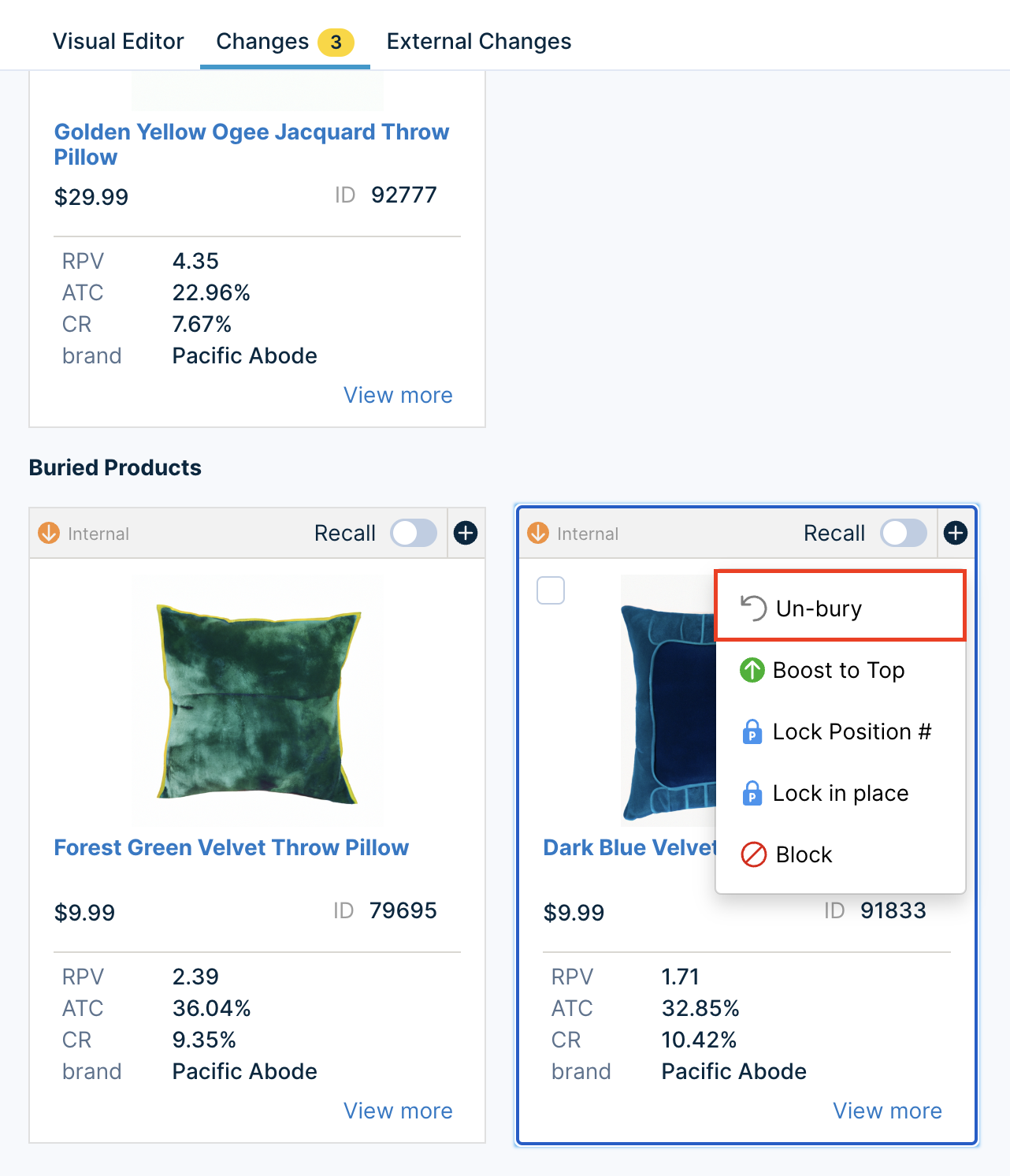
Hence, Bloomreach makes it easy to remove the conflicts in ranking rules.
5. Sort overrides Ranking rules (Boost, Bury, Slot rules)
When you pass the sort parameter in the API requests, the sort overrides any ranking rules configured for the search query/category and ranks the products based on the sort parameter value.
Updated 11 months ago
